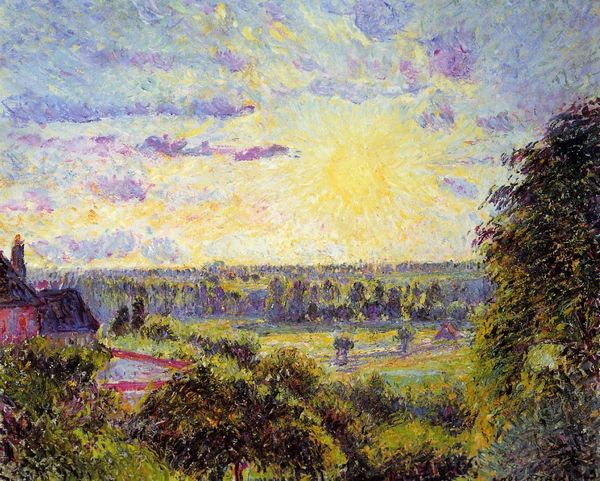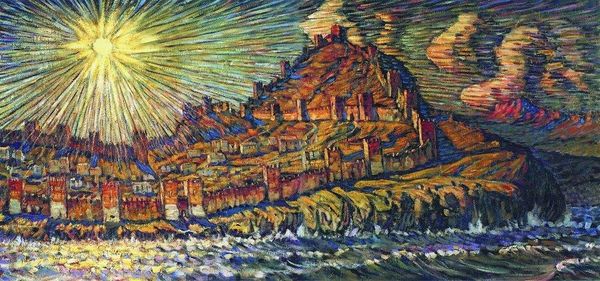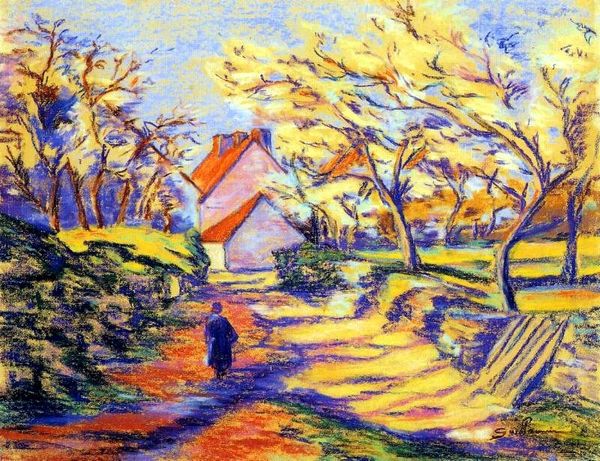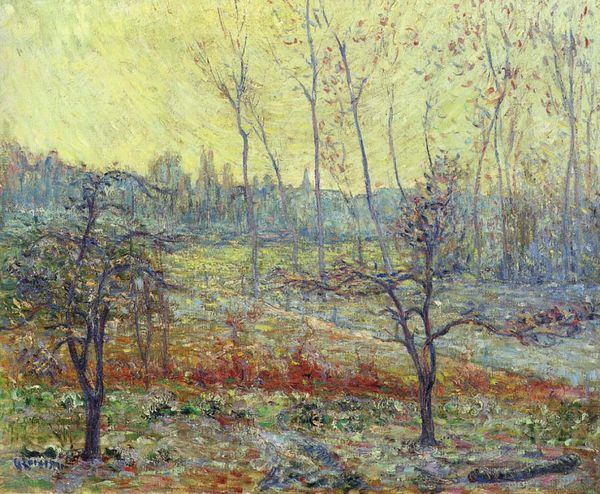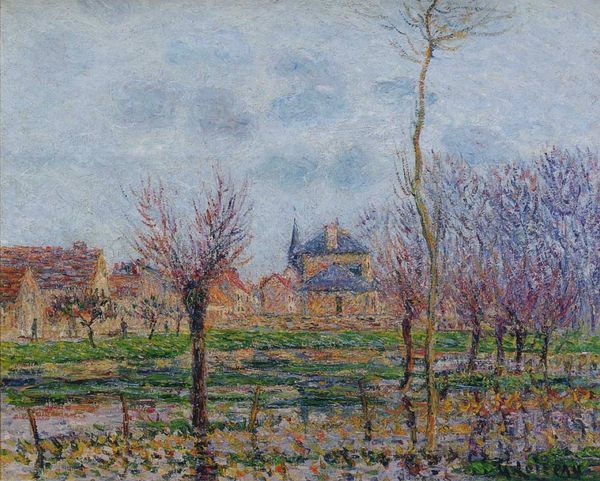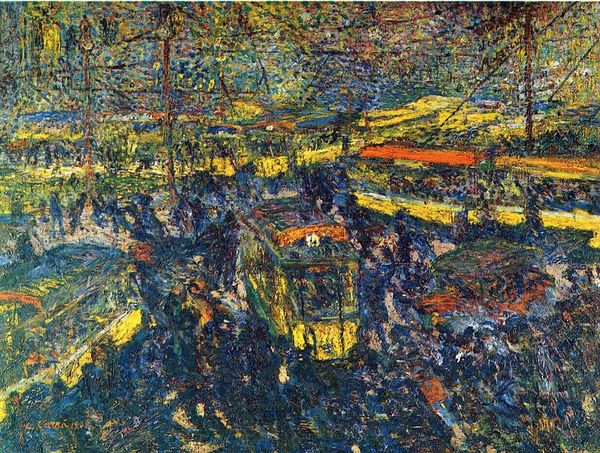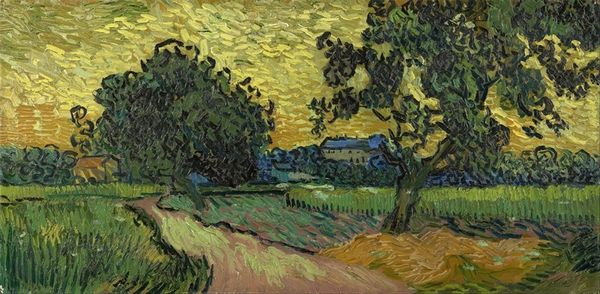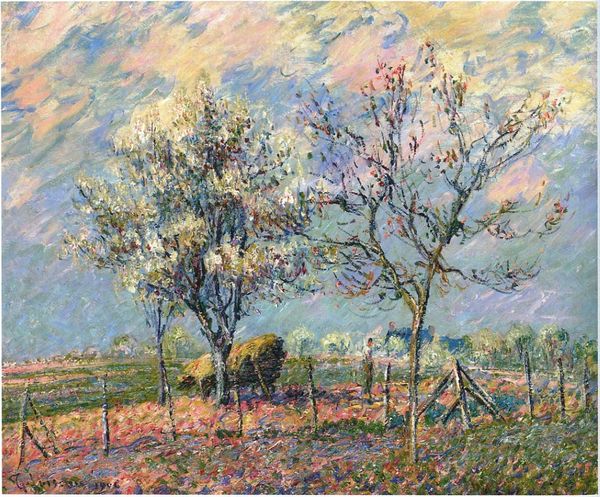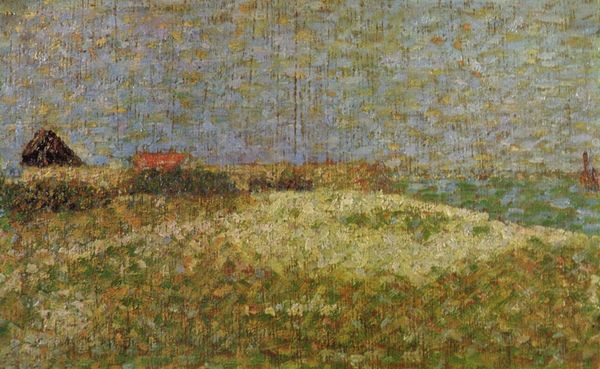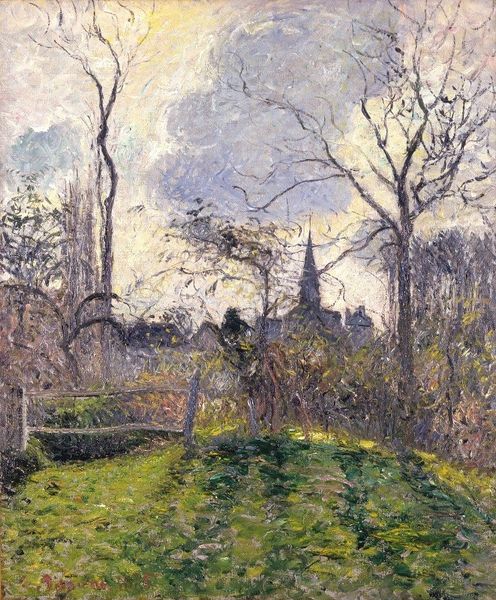
Copyright: Public domain
Editor: We're looking at Konstantin Bogaevsky’s “The Sun,” painted in 1906 using oil paints, with a generous impasto technique. The whole canvas feels like it's vibrating with light, but there’s also a certain stillness in the buildings and landscape below. How do you read the interplay between those two aspects? Curator: It is the visual structure of this work which arrests my attention. Note the composition: the orb of the sun dominating the canvas, and the linear, radiating strokes emphasizing its energy. This is effectively contrasted against the dense, cuboid forms comprising the town. Consider the artist’s deliberate arrangement of shapes and colors. Editor: Right, there's a real tension there! The texture is fascinating as well, thick strokes everywhere. It almost feels abstract even though it is, ostensibly, a cityscape. Curator: Indeed. Bogaevsky manipulates the medium, oil paint, to construct not a mirror image, but a rendition charged with expressive force. Observe how the very materiality of the paint, daubed and layered, builds this intense light. Forget what this might *represent.* The houses themselves are secondary to this feeling evoked through texture and light. Editor: So you're saying it is about the process itself, the application of paint? Curator: Precisely. The artist’s formal vocabulary is key to experiencing this painting. Focus on color values, the surface treatment, and geometric interplay to truly decipher his visual syntax. Editor: I see, so the focus isn't necessarily on the subject matter, but more on the formal choices the artist made, and how they create the final image? That really makes me reconsider how I approached this painting. Curator: Yes. Disengaging from narrative allows us to fully appreciate how these choices impact one another, yielding meaning through form itself. Editor: That makes complete sense. I never thought about it that way before.
Comments
No comments
Be the first to comment and join the conversation on the ultimate creative platform.
